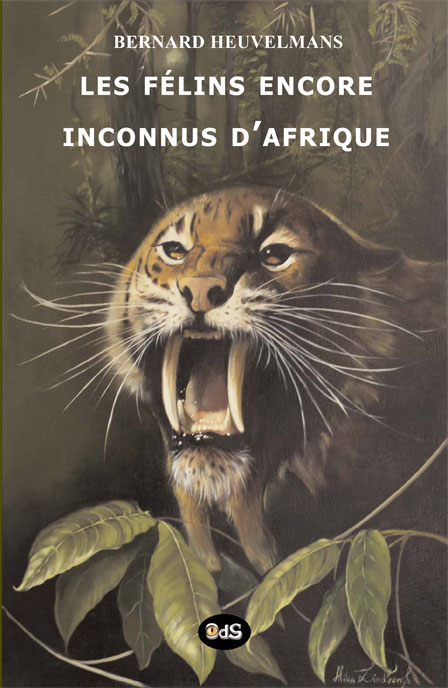
October 9, 2008
The French cryptozoologist Michel Raynal shares a literary re-discovery of the Wobo.

Raynal writes that “in Bernard Heuvelmans’ book (published after his death), Les Felins Encore Inconnus D’Afrique, Heuvelmans mentions the Wobo, a mysterious cat from Africa.”
Raynal continues, “Only recently, I realized that the famous Polish novellist Henryk Sienkiewicz (known worldwidely as the author of Quo Vadis) spoke at greater length of the Wobo in another of his books, translated into English as In Desert and Wilderness (1912).
The plot of the book is summarized thusly:
It is the story of two kids, Staś Tarkowski and Nel Rawlinson, kidnapped by the rebels during Mahdi’s rebellion in Sudan….
Staś and Nel live in Port Said, where their parents are engineers working on the Suez Canal. In the meantime, an anti-British rebellion begins in Sudan under Muhammad Ahmad. Staś and Nel are captured as hostages, but eventually they escape from the captivity. Helped by some African natives they are eventually rescued by a British expedition and return to their family.
Although the novel is fictional (apart from the historical events), it was inspired by real events. A Polish boy was indeed kidnapped at those times, but has never been found. An inspiration for Nel’s character was the daughter of Sienkiewicz’s friend.
What is a Wobo?
The Wobo (Ethiopia, Africa) is described as being larger than a lion, yellowish-brown or grey-brown in colour and having black stripes. A Wobo pelt had apparently been displayed in the principal cathedral of Eifag. It is speculated that the pelt was actually that of an Asian tiger that had ended up in Ethiopia with a settler and perhaps been used as trade goods. The Abu Sotan (Sudan, Africa) is said to inhabit rocky mountains near the River Rahad. It is described as being marked with great black blotches or stripes. Sudan and Ethiopia are neighbouring countries, so perhaps a race of unusual big cats lives in the area. as per Karl Shuker in his Mystery Cats of the World
The novel, In Desert and Wilderness, Raynal points out, is now available (completely) for download from archive.org here. At the link, you should choose the PDF format, then search for “Wobo” in the research engine of Adobe Acrobat Reader.
As Michel Raynal notes, this is a newly discovered “literary contribution to cryptozoology.”
About Loren Coleman
Loren Coleman is one of the world’s leading cryptozoologists, some say “the” leading living cryptozoologist. Certainly, he is acknowledged as the current living American researcher and writer who has most popularized cryptozoology in the late 20th and early 21st centuries.
Starting his fieldwork and investigations in 1960, after traveling and trekking extensively in pursuit of cryptozoological mysteries, Coleman began writing to share his experiences in 1969. An honorary member of Ivan T. Sanderson’s Society for the Investigation of the Unexplained in the 1970s, Coleman has been bestowed with similar honorary memberships of the North Idaho College Cryptozoology Club in 1983, and in subsequent years, that of the British Columbia Scientific Cryptozoology Club, CryptoSafari International, and other international organizations. He was also a Life Member and Benefactor of the International Society of Cryptozoology (now-defunct).
Loren Coleman’s daily blog, as a member of the Cryptomundo Team, served as an ongoing avenue of communication for the ever-growing body of cryptozoo news from 2005 through 2013. He returned as an infrequent contributor beginning Halloween week of 2015.
Coleman is the founder in 2003, and current director of the International Cryptozoology Museum in Portland, Maine.
Filed under Alien Big Cats, Books, Cryptofiction, Cryptomundo Exclusive, Cryptotourism, CryptoZoo News, Cryptozoologists, Cryptozoology, Eyewitness Accounts, Mystery Cats